
User Instruction Manual
Oxford® Up
To avoid injury, read user manual prior to use. For alternative languages, contact your
authorised service provider. Always refer to Joerns.co.uk for latest revision.
Manuel de l’utilisateur
Oxford® Up
Afin d’éviter tout accident, veuillez lire attentivement la notice avant utilisation. Pour
obtenir ces informations dans une autre langue, veuillez contacter votre prestataire de
service agréé. Reportez-vous toujours à Joerns.co.uk pour la dernière révision.
Manual de Instrucciones
Oxford® Up
Para evitar posibles daños, lea previamente el manual de usuario. Para otros
idiomas, póngase en contacto con su proveedor de servicios autorizado.
Consulte siempre Joerns.co.uk para obtener la última revisión.
Benutzerhandbuch
Oxford® Up
Um Verletzungen zu vermeiden, lesen Sie bitte die Gebrauchsanweisung vor der ersten
Benutzung. Für andere Sprachen wenden Sie sich an Ihren autorisierten Dienstanbieter.
Beziehen Sie sich immer auf Joerns.co.uk für die neueste Version.
Gebruikershandleiding
Oxford® Up
Lees voor gebruik de handleiding om letsel te voorkomen. Neem voor
andere talen contact op met uw erkende dienstverlener. Raadpleeg
altijd Joerns.co.uk voor de laatste revisie.

Oxford®
Up
2
English
Contents
1. Introduction .......................................................................................................................... 3
2. Assembly & Commissioning Instructions ............................................................................. 5
3. Safety Precautions ............................................................................................................... 6
4. Operating Instructions .......................................................................................................... 8
5. Maintenance Schedule ...................................................................................................... 16
6. Technical Specifications .................................................................................................... 17
7. Warranty ............................................................................................................................ 19

Oxford®
Up
3
English
1. Introduction
The Oxford Up is an assistive standing and transfer device, designed for moving a person over short
distances. This might be from bed to chair, chair to wheelchair or to and from a toilet/commode, for
example. The Up has a compact footprint, enabling effective use, even in confined spaces.
The packing consists of a strong, purpose built carton that is used for both export and domestic
markets to ensure the safe arrival of the product.
To properly maintain your product please refer to the maintenance schedule included in this
document. If you are at all unsure what your country’s servicing requirements are, please check
with your authorised distributor and/or a local government agency.
The CE mark: The Oxford Up carries the CE mark and complies with the following EC
directives:
• Medical Device Directive MDR 2017/745
Statement of Intended Use
The Oxford Up is intended for use by an individual who has the ability to stand unassisted or with
minimal assistance. It will enable their transfer from one resting surface to another, such as from
a bed to a chair. It is an active product for users who can contribute effort to the standing and
transfer process. By encouraging user participation, the Up can be a valuable rehabilitation aid,
improving natural function and tone. The Up is designed for indoor use and for transfers on flat
surfaces, over short distances only.
Expected Service Life
Oxford Professional products are designed and tested for a minimum service life of ten (10)
years, subject to the use and maintenance procedures stated in this manual. Use, other than in
accordance with these instructions, may compromise service life.
Serious Incident Reporting
In the event of a serious incident taking place during use of this product, affecting the patient
and/or care-giver, it must be reported to the product manufacturer or authorised distributor.
Should the incident take place within the European Union (EU), it must also be reported to the
local competent authority within the member state. Please contact Joerns Healthcare in the first
instance for advice and guidance.

Oxford®
Up
4
English
Push Handle
Patient Cross Bar
Clip Sling Attachment Point
Swing-away
Seat Pads
Knee Pad
Legs
Front Castors
Footplate / Base
Braked Rear
Castor
Leg Open / Close Pedals
Clip Sling
Attachment Point
Mast
The Oxford Up Stand Aid

Oxford®
Up
5
English
2. Assembly & Commissioning Instructions
Carton Contents
WARNING
The Oxford Up components will need to be lifted with care. You may need assistance to lift
the components from the carton and during assembly.
Place the carton in a clear working area and open carefully.
The carton contains:
• Oxford Up (Disassembled)
• 1 x Base
• 1 x Seat support tube section
• 1 x Mast
• 1 x Mast locking knob
• User Guide (This document)
Preparation for Use (Assembly)
The Oxford Up requires some assembly once removed
from its packaging, as follows:
1. Place the base (castors down) onto a flat surface
and apply both rear castor brakes.
2. Insert the seat tube section over the base spigot,
ensuring full and positive engagement.
3. Fully insert the mast in through the top of the seat
support tube section locating hole, ensuring the mast
engagement line (decal) sits flush with the top edge.
4. Insert the mast locking knob through the hole on the
back of the seat support tube section, turning clockwise
until it is hand tight.
5. Check and verify secure fitment of all components
and ensure you are aware of all safety and operating
guidance within this manual, prior to use.
Disassembly
The Oxford Up can be disassembled for storage and
transportation by reversing steps 2 - 4, above. Take
care to retain the mast locking knob for reassembly.
Mast
Seat support
tube section
Base
Mast
locking
knob

Oxford®
Up
6
English
3. Safety Precautions
Please read and follow the safety precautions listed below. The operation and use
of Oxford products is simple and straightforward. Following these few basic safety
precautions will make transfer operations easy and trouble free.
READ AND UNDERSTAND THE USER INSTRUCTIONS BEFORE USING YOUR UP.
WARNING: Important safety information for hazards that might cause serious injury.
CAUTION: Information for preventing damage to the product.
NOTE: Information to which you should pay special attention.
WARNING
• ALWAYS carry out a full and thorough risk assessment prior to using the Up.
• In order to use the Up safely, the patient must display the following abilities:
• Support their own body weight while standing
• Maintain balance for an extended period while standing (with support)
• A firm grip in order to grasp the frame handles for support and stability
• Ability to understand and carry out instruction
• The Up is intended for short transfers on flat/even floors.
• ALWAYS plan your transfer operations before commencing.
• ALWAYS carry out the DAILY CHECK LIST before using this product.
• ALWAYS familiarise yourself with the operating devices and safety features of this
product before use.
• DO NOT use a sling or belt unless it is recommended for use with the device.
• ALWAYS check the sling/belt is suitable for the particular patient and is of the correct
size and capacity.
• NEVER use a sling/belt which is frayed or damaged.
• ALWAYS fit a sling/belt according to the user instructions provided.
• ALWAYS check the safe working load of the product(s) is/are suitable for the weight of
the patient.
• ALWAYS carry out transfers according to the instructions in the user manual.
• NEVER attempt to bypass a safety feature because it seems easier to operate
the product.
• NEVER force an operating or safety device. All devices are easy to use and do not
require excessive force to operate. If a device is not working easily there will be a
reason. Forcing will only strain or damage the product and may compromise safety.
• To avoid inadvertent contact with the rear braked castors during transfer, and possible
injury, ENSURE the patient’s feet are correctly positioned on the footplate.
• ALWAYS apply both brakes after positioning the Up into position in front of the patient
prior to asking them to stand.
• When transferring to or from a wheeled/movable surface such as a commode, wheel
chair or bed, ensure the brakes (of that surface) are applied to avoid any inadvertent
movement and ensure a safer, more stable transfer.

Oxford®
Up
7
English
• DO NOT attempt to manoeuvre the device by pushing on the patient.
• ALWAYS manoeuvre the device using the handle provided. DO NOT attempt to apply
side force to the base or frame of the device in order to manoeuvre.
• DO NOT push a loaded device at speeds exceeding a slow walking pace (3 kilometres/
hour 0.8 metres/second).
• DO NOT push the device over wet surfaces, uneven or rough ground or surfaces littered
with debris, particularly when loaded.
• DO NOT attempt to push or pull a loaded device over a floor obstruction of which the
castors are unable to ride over easily.
• DO NOT bump the device down steps, loaded or unloaded.
• DO NOT attempt to negotiate a loaded device on a slope which exceeds 1:12
(approximately 5 degrees). Joerns Healthcare recommend a second helper is present
when moving a patient on a slope.
• DO NOT park a loaded device on ANY sloping surface.
• DO NOT transfer a patient unless you are trained and competent to do so.
• Your device is for patient standing and transfers. DO NOT use it, or allow it to be used,
for any other purpose.
• DO NOT use this product for self transfers; a patient must always be assisted by
caregiver(s).
• ENSURE the caregiver(s) wear appropriate footwear when using this product.
• OXFORD RECOMMENDS THE USE OF GENUINE OXFORD PARTS. Oxford sling/belt
and transfer products are designed to be compatible with one another. For country
specific guidance on sling/belt use and compatibility, please refer to the sling/belt label
or contact your local market distributor or Joerns Healthcare.

Oxford®
Up
8
English
4. Operating Instructions
1. Swing-away Seat Pads
The seat pads are designed to swing-away allowing easy access for the patient when standing.
There is an integrated handle on the back of each seat pad to facilitate this.
Once the patient is in position and standing, the seat pads can be returned to the seated position,
allowing the patient to sit down.
2. Opening & Closing the Legs
The legs of the Up can be opened and closed to allow easier positioning around furniture. To
open the legs, push down the left hand pedal. To close, push down the right hand pedal.
3. Applying the Brakes
Each rear castor can be braked independently by pressing down firmly on the integrated brake
pedal. To release the brakes, simply manoeuvre the pedal back up.

Oxford®
Up
9
English
4. Approaching the Patient with the Oxford Up
The following guidance applies no matter what the surface you are transferring from, whether it
be a chair, wheelchair, bed, toilet or commode.
WARNING
ALWAYS carry out a full and thorough risk assessment prior to using the Up.
Maintain a dialogue with the patient, ensuring they understand what is happening and they are
comfortable and at ease.
If a sling has been deemed necessary as part of the risk assessment, ensure you have the
appropriate, compatible style and size.
Rotate the swing-away seat pads into the open position to allow patient access.
To gain improved access around large chairs and bulky commodes, open the legs of the Up
before approaching the patient.

Oxford®
Up
10
English
Carefully wheel the Up into position, in front of the patient, placing their feet on the footplate with
their knees resting comfortably against the cushioned knee pad.
WARNING
To avoid inadvertent contact with the rear braked castors during transfer, and possible
injury, ENSURE the patient’s feet are correctly positioned on the footplate.
Once the patient is comfortably in position, apply both rear castor brakes.

Oxford®
Up
11
English
5. Assisted Standing and Transfers with the Oxford Up
The following guidance applies regardless of the surface you are transferring to, whether it be a
chair, wheelchair, bed, toilet or commode.
WARNING
When transferring to or from a wheeled/movable surface such as a commode, wheelchair
or bed, ensure the brakes (of that surface) are applied to avoid any inadvertent movement
and ensure a safer, more stable transfer.
Ask the patient to grasp the crossbar and prepare to raise themselves to a standing position. Offer
words of encouragement and provide assistance as required.
NOTE: The patient’s knees should remain in contact with the knee pad throughout the standing and
transfer process.
Once the patient is standing, rotate the swing-away seat pads into the seated position before asking
the patient to carefully lower themselves into a seated position.

Oxford®
Up
12
English
Ensure the patient is comfortable and fully supported before releasing the brakes and proceeding
carefully with the transfer.
WARNING
When transferring to or from a wheeled/movable surface such as a commode, wheelchair
or bed, ensure the brakes (of that surface) are applied to avoid any inadvertent movement
and ensure a safer, more stable transfer.
Wheel the patient directly in front of the target surface and apply the brakes. Open the Up’s legs
to help navigate and get close to wider furniture including bulky commodes and armchairs.
Ask the patient to grasp the crossbar and raise themselves into a standing position, providing
assistance if required.

Oxford®
Up
13
English
Once the patient is standing, rotate the swing-away seat pads into the up position, providing a
barrier-free space in behind.
WARNING
When transferring to or from a wheeled/movable surface such as a commode, wheelchair
or bed, ensure the brakes (of that surface) are applied to avoid any inadvertent movement
and ensure a safer, more stable transfer.
With the patient continuing to grasp the crossbar, ask them to carefully lower themselves on to the
target surface, providing assistance as necessary.

Oxford®
Up
14
English
6. Sling Compatibility & Attachment
WARNING
A thorough and careful risk assessment MUST be conducted prior to using any sling.
Joerns Healthcare recommends that slings be checked regularly and particularly before use
for signs of fraying or damage. DO NOT use slings that are worn or damaged.
OXFORD RECOMMENDS THE USE OF GENUINE OXFORD PARTS. Oxford sling, lift and
transfer products are designed to be compatible with one another. For country specic
guidance on sling use and compatibility, please refer to the sling label or contact your local
market distributor or Joerns Healthcare.
Refer to maximum weight capacity of product. Sling capacity is limited by the maximum
capacity of the product it is used on.
Oxford Deluxe Standing Sling (with Clips):
NOTE: For full fitting instructions, please refer to the
user guide supplied with each sling.
If your patient would benefit from additional reassurance
and support, the Oxford Deluxe Standing sling with clips
can be used in combination with the Up.
Place the sling around the patient just above the waist
line and secure the waist belt around the patient using
the clip. This strap need not be tight. It is there to hold
the sling in position while attaching the sling to the Up.
Ensure that the client’s arms are outside the sling.
When tted to the patient, the sling is connected to the clip attachment pins by using the Securi3 clip
system (step by step guide as follows). To remove, simply reverse this procedure.
PLEASE NOTE:
1. Attach Securi3 clips to the attachment
pins as described in the illustration shown.
2. Ensure all green safety loops are
inserted and green dots are visible
before transferring.
SECURI3 CLIP SYSTEM

Oxford®
Up
15
English
NOTE: Use the appropriate clip to achieve a natural seated position that provides good, comfortable
support without pulling the patient forward or allowing them to lean back and become unbalanced.
Continue with the transfer according to the guidance in this document.
Oxford Patient Handling Belt:
NOTE: For full fitting instructions, please refer to the user
guide supplied with each sling.
The Oxford Patient Handling Belt can be used to assist with
moving and handling tasks including assisted standing.
Position the Patient Handling Belt around the back of the
patient, ensuring the guidance label is on the outer side and
the elasticated section is at the top. Once the belt is in the
correct position, fasten the Velcro, ensuring positive and secure
attachment. Ask and/or assist the patient to lean forwards
before positioning the lower belt section underneath, towards
the ischial tuberosities.
In addition to fastening the Velcro belt, ENSURE the clipped strap is also firmly secured around
the waist.
Adopting a wide, stable base and using the side handles, carer assistance can be provided to
help the patient rise from a seated position.

Oxford®
Up
16
English
5. Maintenance Schedule & Daily Check List
All Oxford products are designed for minimum maintenance, however some safety checks and
procedures are required. A schedule of DAILY tasks are detailed below.
Daily checks and regular inspection will ensure your product is kept in optimum safe working
condition. A list of spare parts is available upon request.
Daily Check List:
Joerns Healthcare strongly recommends the following checks be carried out on a daily basis and
before using the Up.
- ENSURE the product moves freely on its castors.
- ENSURE both castor brakes are operational and engage correctly.
- ENSURE the legs open and close correctly.
- ENSURE the mast locking knob is installed and hand tight.
- ENSURE the knee pad is secure and pivots freely.
- EXAMINE the seat pads for freedom of rotation and signs of excessive wear.
- EXAMINE the sling attachment points for excessive wear. If in doubt - do not use.
- EXAMINE slings for fraying or other damage. DO NOT use any sling if damaged or if the sling
shows signs of wear.
- INSPECT the frame and base for signs of cracks, damage or distortion.
Spare Parts & Repairs:
WARNING
JOERNS HEALTHCARE RECOMMENDS THE USE OF GENUINE OXFORD PARTS.
Please contact your local authorised Oxford service provider to arrange replacement parts and
repairs. If you are unsure of the organisation you need to contact, our customer service team
will be more than happy to assist you. Contact details can be found on the reverse cover of this
manual.
Cleaning:
Using a clean, damp cloth, wipe clean with ordinary soap and water and/or any hard surface
disinfectant. Harsh chemical cleaners or abrasives should be avoided as these may damage the
surface finish of the product. After cleaning, the unit should be thoroughly dried.

Oxford®
Up
17
English
6. Technical Specifications
Safe Working Load ........................................................................................................200kgs
Overall Width ................................................................................................................ 630mm
Overall Height ............................................................................................................ 1100mm
Overall Length .............................................................................................................. 950mm
Legs Open - External Width ......................................................................................... 845mm
Legs Open - Internal Width .......................................................................................... 725mm
Legs Closed - External Width....................................................................................... 600mm
Legs Closed - Internal Width ........................................................................................ 480mm
Leg Height .................................................................................................................... 110mm
Ground Clearance .......................................................................................................... 26mm
Overall Height Of Base (Footplate) ................................................................................ 52mm
Knee Pad Height (From Footplate to top of Knee Pad) ............................................... 483mm
Turning Radius ........................................................................................................... 1040mm
Front Castors .................................................................................................................. 75mm
Rear Castors ................................................................................................................ 100mm
Weights:
Base .............................................................................................................................. 19.5kg
Seat Support Tubes Section ........................................................................................... 9.5kg
Mast .................................................................................................................................... 4kg
Total.................................................................................................................................33kgs
Environmental Conditions:
Outside this environment functionality and safety may be compromised.
Operating:
Temperature ................................................... 5°C to 40°C
Relative humidity .............................................20% to 90% @ 30°C - non-condensing
Storage:
Temperature ........................................... ........ -20°C to +80°C
Relative humidity .............................................10% to 95% @ 30°C - non-condensing

Oxford®
Up
18
English
KEY SYMBOLS:
The following symbols are used for the Oxford Up.
This product is a Medical Device in accordance with EU Medical Device
Regulation 2017/745.
For indoor use.
ATTENTION, consult accompanying documents.
Refer to the user instructions before use (Blue background).
Certification mark indicating conformity with the applicable requirements for
products sold within Great Britain.
A point of contact between the non-European medical device manufacturer,
the national Competent Authorities (Ministry of Health) and Notified Bodies.
A unique device identification intended to provide single, globally harmonised
positive identification of medical devices through distribution and use.
Indicates the entity importing the medical device into the locale.

Oxford®
Up
19
English
7. Warranty
Joerns Healthcare has an established network of authorised distributors and service agents who
will be pleased to handle all of your purchasing, warranty, repair and maintenance enquiries. It
is recommended that our products are commissioned by your authorised distributor or service
agent.
The distributor or service agent operates the warranty programme, so it is important to keep
a record of their name, address and telephone number so they can be contacted should
any problem arise. If you are in any doubt as to where your product was purchased, Joerns
Healthcare can trace the supplier if you quote the serial number of the product.
All warranty claims are subject to the correct use and maintenance in accordance with the
user instruction manual provided with each product. Damage caused by use in unsuitable
environmental conditions or failure to maintain the product in accordance with user and service
instructions is not covered. Your statutory rights remain unaffected.
REMEMBER: Contact your authorised distributor or service agent for purchases, repairs, servicing
and certified maintenance.
Your distributor:

Francais
Oxford®
Up
20
Sommaire
1. Introduction ........................................................................................................................ 21
2. Instructions de montage et de mise en service ................................................................. 23
3. Consignes de sécurité ....................................................................................................... 24
4. Fonctionnement ................................................................................................................. 26
5. Calendrier d’entretien ........................................................................................................ 34
6. Spécifications techniques .................................................................................................. 35
7. Garantie ............................................................................................................................. 37
Seite laden ...
Seite laden ...
Seite laden ...
Seite laden ...
Seite laden ...
Seite laden ...
Seite laden ...
Seite laden ...
Seite laden ...
Seite laden ...
Seite laden ...
Seite laden ...
Seite laden ...
Seite laden ...
Seite laden ...
Seite laden ...
Seite laden ...
Seite laden ...
Seite laden ...
Seite laden ...
Seite laden ...
Seite laden ...
Seite laden ...
Seite laden ...
Seite laden ...
Seite laden ...
Seite laden ...
Seite laden ...
Seite laden ...
Seite laden ...
Seite laden ...
Seite laden ...
Seite laden ...
Seite laden ...
Seite laden ...
Seite laden ...
Seite laden ...
Seite laden ...
Seite laden ...
Seite laden ...
Seite laden ...
Seite laden ...
Seite laden ...
Seite laden ...
Seite laden ...
Seite laden ...
Seite laden ...
Seite laden ...
Seite laden ...
Seite laden ...
Seite laden ...
Seite laden ...
Seite laden ...
Seite laden ...
Seite laden ...
Seite laden ...
Seite laden ...
Seite laden ...
Seite laden ...
Seite laden ...
Seite laden ...
Seite laden ...
Seite laden ...
Seite laden ...
Seite laden ...
Seite laden ...
Seite laden ...
Seite laden ...
Seite laden ...
Seite laden ...
Seite laden ...
Seite laden ...
-
 1
1
-
 2
2
-
 3
3
-
 4
4
-
 5
5
-
 6
6
-
 7
7
-
 8
8
-
 9
9
-
 10
10
-
 11
11
-
 12
12
-
 13
13
-
 14
14
-
 15
15
-
 16
16
-
 17
17
-
 18
18
-
 19
19
-
 20
20
-
 21
21
-
 22
22
-
 23
23
-
 24
24
-
 25
25
-
 26
26
-
 27
27
-
 28
28
-
 29
29
-
 30
30
-
 31
31
-
 32
32
-
 33
33
-
 34
34
-
 35
35
-
 36
36
-
 37
37
-
 38
38
-
 39
39
-
 40
40
-
 41
41
-
 42
42
-
 43
43
-
 44
44
-
 45
45
-
 46
46
-
 47
47
-
 48
48
-
 49
49
-
 50
50
-
 51
51
-
 52
52
-
 53
53
-
 54
54
-
 55
55
-
 56
56
-
 57
57
-
 58
58
-
 59
59
-
 60
60
-
 61
61
-
 62
62
-
 63
63
-
 64
64
-
 65
65
-
 66
66
-
 67
67
-
 68
68
-
 69
69
-
 70
70
-
 71
71
-
 72
72
-
 73
73
-
 74
74
-
 75
75
-
 76
76
-
 77
77
-
 78
78
-
 79
79
-
 80
80
-
 81
81
-
 82
82
-
 83
83
-
 84
84
-
 85
85
-
 86
86
-
 87
87
-
 88
88
-
 89
89
-
 90
90
-
 91
91
-
 92
92
in anderen Sprachen
- English: Joerns Oxford User manual
- français: Joerns Oxford Manuel utilisateur
- español: Joerns Oxford Manual de usuario
- Nederlands: Joerns Oxford Handleiding
Verwandte Papiere
Sonstige Unterlagen
-
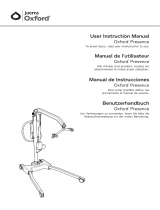 Joerns Oxford® N33092 Bedienungsanleitung
Joerns Oxford® N33092 Bedienungsanleitung
-
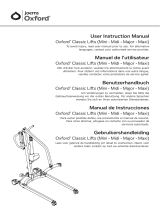 Joerns Oxford® R04446 Bedienungsanleitung
Joerns Oxford® R04446 Bedienungsanleitung
-
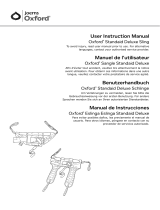 Joerns Oxford® F21826 Bedienungsanleitung
Joerns Oxford® F21826 Bedienungsanleitung
-
Joerns Healthcare Oxford Comfort Sling Benutzerhandbuch
-
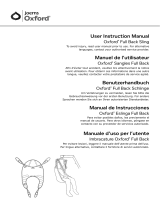 Joerns Oxford PHSL-E1A1706 Benutzerhandbuch
Joerns Oxford PHSL-E1A1706 Benutzerhandbuch
-
Joerns Oxford Elara Ceiling Lifts Benutzerhandbuch
-
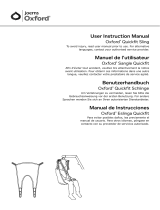 Joerns Oxford® F27178 Bedienungsanleitung
Joerns Oxford® F27178 Bedienungsanleitung
-
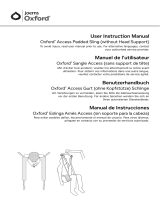 Joerns Oxford® M78287 Bedienungsanleitung
Joerns Oxford® M78287 Bedienungsanleitung
-
Oxford Full Back Silkfit Sling Benutzerhandbuch
-
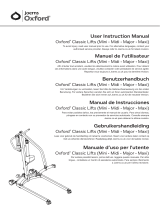 Oxford Mini 140 Benutzerhandbuch
Oxford Mini 140 Benutzerhandbuch


































































































